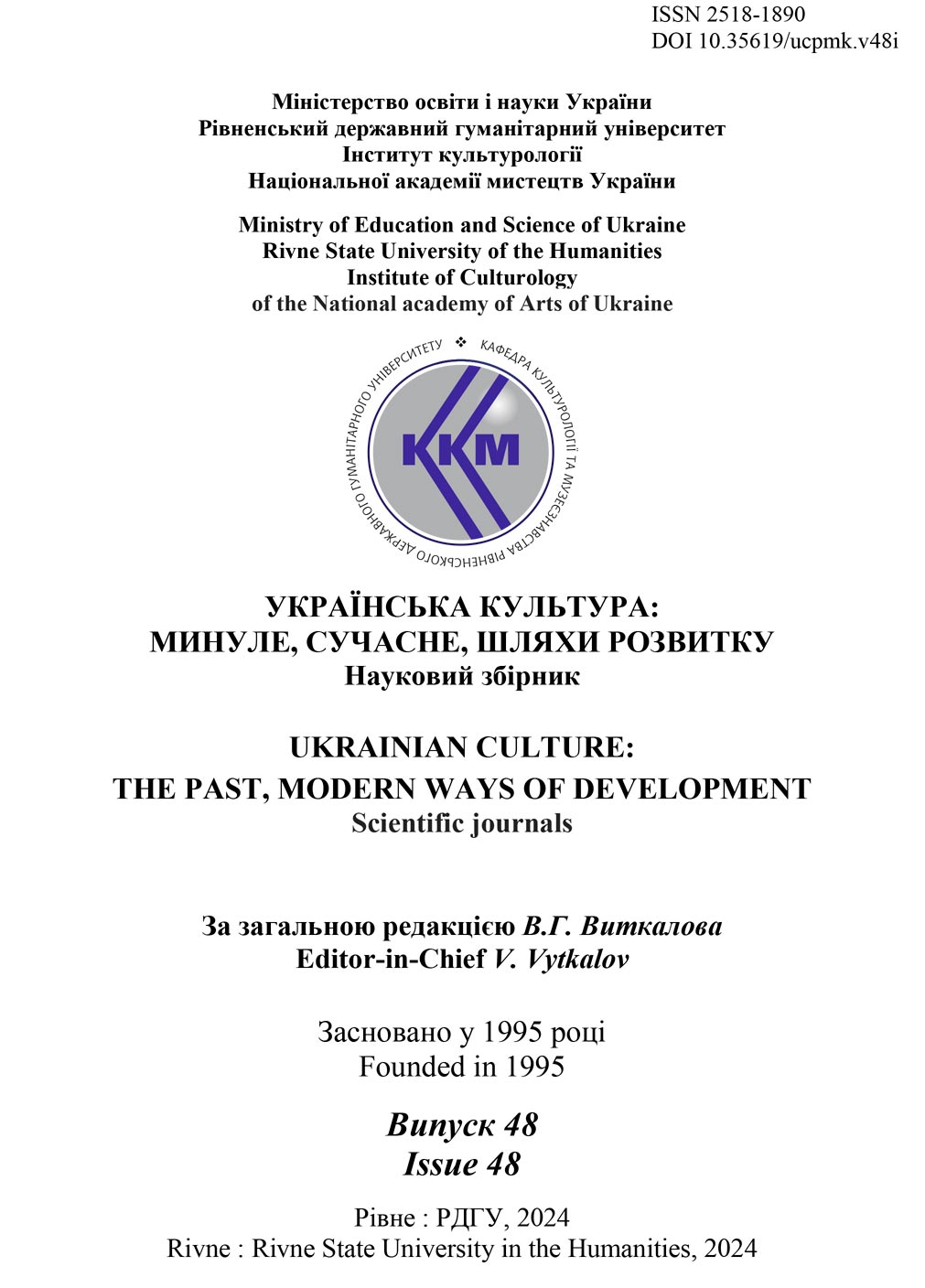THE EVOLUTION OF THE SEMANTICS OF CULT STONES AND ITS REFLECTION IN THE SACRED ARCHITECTURE AND ART OF THE ANCIENT WORLD
Abstract
The purpose of the article: to trace the genesis and transformation of the sacred semantics of cult stones during the Stone, Bronze and Early Iron Ages, at the same time finding out whether the related religious and worldview ideas are reflected in the characteristics of the zodiac signs dominant at the time of their appearance.
The methodological basis of the research is works by B. Gurshteyn, M. Chmyhov, C. Ruggles, M. P. Hall, A. Stoliar, D. Peyrony, E. Cartailhac, M. Boule, J. L. Capitan M. Eliade, V. Cabo, G. da Santillana, Herta von Degent.
The results of the study confirmed, that semantics of cult stones changed in the Ancient World in accordance with the evolution of religious and worldviews. In the Paleolithic, they were considered carriers of supernatural power (concentrated in them, like a spark of fire), capable of restoring the existence of the human soul in another world; in the
Mesolithic – they were endowed with special energy as sacred receptacles for the souls of dead people; in the Neolithic, Bronze and Early Iron Ages, in megalithic structures, stones were considered accumulators of the energy of cosmic lights, which elevates a person to the supernatural world. The main religious and worldview ideas of each historical era
were reflected in the characteristics of the zodiac sign dominant at the time of their birth.
The novelty of this study is that for the first time the genesis and transformation of the spiritual meanings of cult stones from the Paleolithic era to the beginning of the new era have been traced; the reflection of fundamental religious and philosophical ideas of each historical period in the characteristics of the zodiac sign, which was dominant in this
period (in which the vernal equinox point was located), was revealed.
Practical significance. Theoretical conclusions can be used to further explore this issue, to teach the history of art, history of world and national culture, when writing scientific works on the history of art.


